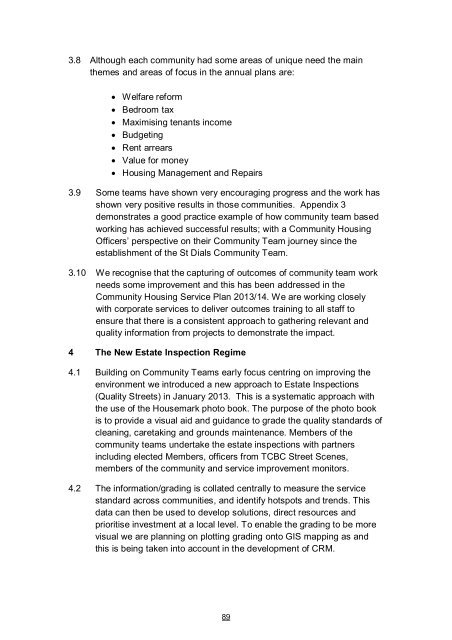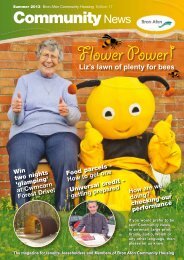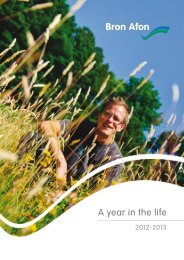September 2013 - Bron Afon
September 2013 - Bron Afon
September 2013 - Bron Afon
You also want an ePaper? Increase the reach of your titles
YUMPU automatically turns print PDFs into web optimized ePapers that Google loves.
3.8 Although each community had some areas of unique need the main<br />
themes and areas of focus in the annual plans are:<br />
• Welfare reform<br />
• Bedroom tax<br />
• Maximising tenants income<br />
• Budgeting<br />
• Rent arrears<br />
• Value for money<br />
• Housing Management and Repairs<br />
3.9 Some teams have shown very encouraging progress and the work has<br />
shown very positive results in those communities. Appendix 3<br />
demonstrates a good practice example of how community team based<br />
working has achieved successful results; with a Community Housing<br />
Officers’ perspective on their Community Team journey since the<br />
establishment of the St Dials Community Team.<br />
3.10 We recognise that the capturing of outcomes of community team work<br />
needs some improvement and this has been addressed in the<br />
Community Housing Service Plan <strong>2013</strong>/14. We are working closely<br />
with corporate services to deliver outcomes training to all staff to<br />
ensure that there is a consistent approach to gathering relevant and<br />
quality information from projects to demonstrate the impact.<br />
4 The New Estate Inspection Regime<br />
4.1 Building on Community Teams early focus centring on improving the<br />
environment we introduced a new approach to Estate Inspections<br />
(Quality Streets) in January <strong>2013</strong>. This is a systematic approach with<br />
the use of the Housemark photo book. The purpose of the photo book<br />
is to provide a visual aid and guidance to grade the quality standards of<br />
cleaning, caretaking and grounds maintenance. Members of the<br />
community teams undertake the estate inspections with partners<br />
including elected Members, officers from TCBC Street Scenes,<br />
members of the community and service improvement monitors.<br />
4.2 The information/grading is collated centrally to measure the service<br />
standard across communities, and identify hotspots and trends. This<br />
data can then be used to develop solutions, direct resources and<br />
prioritise investment at a local level. To enable the grading to be more<br />
visual we are planning on plotting grading onto GIS mapping as and<br />
this is being taken into account in the development of CRM.<br />
89




